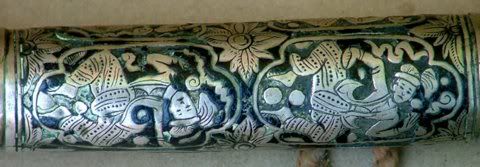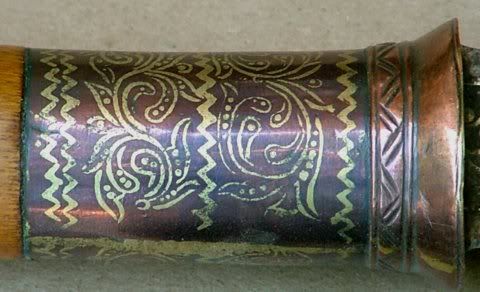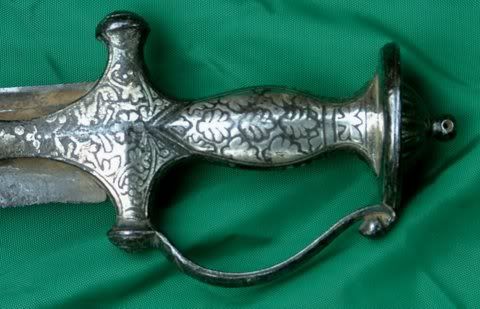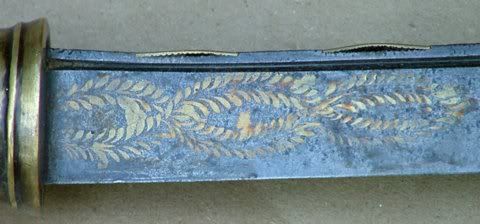
 |
|
|
|
|
#1 |
|
Member
Join Date: Dec 2004
Location: Oahu, Hawaii
Posts: 166
|
Always wondered about these terms can anyone give me a quick primer on definitions and how they are different?
|
|
|

|
|
|
#2 |
|
Member
Join Date: Dec 2004
Location: Virginia
Posts: 520
|
Dan
I often use the term inlay as I think that is a more generic term that fits them all. Though I have also heard it used only for times when the pattern was cut and the metal was either glued or hammered into the pattern I have always been told that in niello the pattern was cut out an then filled with a mixture various of silver and lead alloys. this makes the fill black against the metal color   In koftgari lines are etched into the surface then the metal is pressed onto the scratched marks in the shapes needed then it is heated to help it adhere   All I could find on chasing describes it as an "embossing" on metal  Repousse the metal is hammered into the pattern   That being said I am not as cautious to use these terms properly as I should be. This my understanding of the terms only and I look forward to comments from those more versed in this than I am John Last edited by RhysMichael; 14th December 2004 at 05:17 PM. |
|
|

|
|
|
#3 |
|
Member
Join Date: Dec 2004
Posts: 987
|
I just checked the dictionary to confirm my recollection about "chased" and "repousee," though as it turns out I had them backwards. "Chased" means a pattern in relief on the surface of the metal, engraved or embossed, but basically by working from the outside in. "Repousse" is relief hammered into the metal from the inside out.
"Embossed" is a more general term that means decoration that is raised above the surface. |
|
|

|
|
|
#4 |
|
Vikingsword Staff
Join Date: Dec 2004
Location: The Aussie Bush
Posts: 4,200
|
Our Forum friend, Battara, is an excellent silversmith and experienced in several of these techniques. I would very much like to hear from him how he uses these terms, and also if he has any pictures to post that illustrate the manner in which the various methods are applied.
Thanks Jose. Ian. |
|
|

|
|
|
#5 |
|
EAAF Staff
Join Date: Dec 2004
Location: Louisville, KY
Posts: 7,220
|
Hi folks. First I want to thank you Ian for your kind feedback. Second, I will try to upload the pictures in the right places:
INLAY: Deep grooves are cut into a harder material (ideally at different angles) and then a softer materal is inserted. For example, on Ian's barong, I had to re-engrave the grooves - cut deeper into the grooves - into the steel. Then I took softer brass wire and hammered it into the grooves. This method of decoration makes the softer metal more permanent and thicker. Often it is then polished down to the level of the harder material. Here is an example of the brass inlay I did on Ian's barong blade: Last edited by Battara; 15th December 2004 at 08:26 AM. |
|
|

|
|
|
#6 |
|
EAAF Staff
Join Date: Dec 2004
Location: Louisville, KY
Posts: 7,220
|
chasing:
Technically, the term "chasing" is named after the process of taking a chasing tool, a straight punch with a straight beveled head in the form of a "v" (point down) and as the artist hammers, the artist moves the tool across the surface in simple straight lines or large archs (there are different ways to do this which I will not get into). What has also been subsumed under "chasing" is the process of hammering soft metals with punches with difrerent shaped heads. The artist would hammer the punches onto the surface of the sheetmetal. These indentations then would start to form a design. Here is the scabbard to a silver headed Sulu kris I made. It was my first attempt at chasing silver: |
|
|

|
 |
|
|